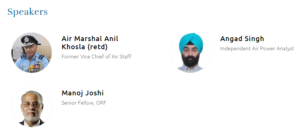
Wars can last anywhere from a few days to several decades. A long-drawn war refers to a protracted conflict that extends over an extended period, often lasting for several years or even decades. These wars are characterized by their prolonged duration, continued engagement of military forces, and significant human, economic, and societal costs.
The duration of a war can vary significantly depending on various factors such as the nature of the conflict, the parties involved, the goals and objectives of the war, external interventions, and the overall strategy and tactics employed by the warring parties. Several factors can contribute to a war becoming a long-drawn are as follows:-
-
- Complexity of the Conflict. Wars with intricate causes, multiple stakeholders, and deeply entrenched issues are more likely to drag on. Resolving complex issues takes time and effort. The two world wars would be under this category.
-
- Geography and Terrain. Wars fought in challenging geographic or climatic conditions can prolong conflict due to logistical difficulties and the strategic advantage it may provide to certain parties. Afghanistan is an ideal example of this aspect.
-
- Military Balance and Stalemates. When opposing forces are relatively evenly matched, it can result in a stalemate, making it difficult for either side to achieve a decisive victory. History is replete with such examples.
-
- Guerrilla Warfare and Insurgency. Wars involving guerrilla warfare or insurgencies can be drawn out due to the asymmetrical nature of the conflict and the difficulty in defeating a dispersed, non-conventional enemy. This aspect is becoming a norm with anti-national forces and organisations being supported by the enemy.
-
- External Support and Intervention. When external powers support opposing factions, it can escalate the conflict and make resolution more challenging, potentially leading to a prolonged war. The Ukraine conflict is a classic example of this factor.
-
- Economic and Resource Factors. The availability of resources, economic strength, and the ability to sustain a war financially can influence the length of a conflict. This aspect is evident in the recent skirmishes between India and Pakistan.
-
- Political Will and Negotiation Efforts. The willingness of parties involved to engage in meaningful negotiations and find a peaceful resolution can significantly impact the duration of the war. A lack of political will or unsuccessful negotiation attempts can prolong the conflict. Once again Ukraine war fits into this category.
-
- Ideological or Religious Motivations. Wars driven by deep-seated ideological or religious beliefs may persist longer due to the fervour and commitment of the involved parties. Historically and even during recent times wars are been driven by Islam versus rest religious ideology.
Efforts to end a long-drawn war often involve a combination of military, diplomatic, and humanitarian approaches. These may include peace negotiations, international mediation, sanctions, humanitarian aid, and efforts to address the root causes of the conflict. Reaching a sustainable resolution often requires addressing the underlying grievances and building a framework for long-term peace and stability. Some examples of wars with varying durations are as follows:-
-
- World War I (1914-1918). Lasted approximately four years, involving many major world powers and resulting in significant loss of life and widespread devastation.
-
- World War II (1939-1945). Lasted approximately six years, involving a vast number of countries and resulting in immense destruction and loss of life.
-
- Korean War (1950-1953). Lasted for three years, involving North Korea (with the support of China and the Soviet Union) against South Korea (with support from the United Nations and primarily the United States).
-
- Vietnam War (1955-1975). Lasted approximately 20 years, with the primary belligerents being North Vietnam (supported by the Soviet Union and China) and South Vietnam (supported by the United States and other anti-communist allies).
-
- Gulf War (1990-1991). Lasted about a year, involving a coalition of countries, primarily led by the United States, to liberate Kuwait from Iraqi occupation.
-
- Afghanistan War (2001-2021). Initially launched as a response to the 9/11 terrorist attacks, this conflict lasted for nearly 20 years before the withdrawal of U.S. and allied forces from Afghanistan in 2021.
-
- Syrian Civil War (2011-ongoing). This conflict had been ongoing for over a decade, with various factions and external powers involved.
It’s essential to note that conflicts are complex, and the durations represent the broad spans of active hostilities. Additionally, some conflicts may continue in different forms even after the cessation of major combat operations.
Suggestions and value additions are most welcome
For regular updates, please register here
Subscribe
References and credits
To all the online sites and channels.
Disclaimer:
Information and data included in the blog are for educational & non-commercial purposes only and have been carefully adapted, excerpted, or edited from sources deemed reliable and accurate. All copyrighted material belongs to respective owners and is provided only for purposes of wider dissemination.



